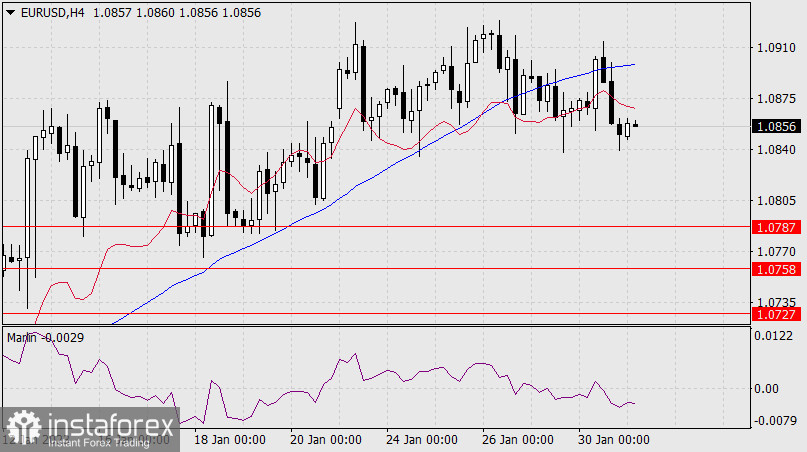On Monday, the euro tried to trade wide, i.e. it tried to go up using the CPI growth in Spain in January to 5.8% y/y against 5.7% y/y earlier, but the German GDP contraction by -0.2% q/q and the manufacturing activity growth by the Dallas Fed in January from -20.0 to -8.4, made the euro close the day lower by 18 points.

The main events will be held tomorrow and on Thursday. The Federal Reserve is expected to raise rates by 0.25% tomorrow and the European Central Bank is expected to raise rates by 0.50% on Thursday. We don't know which way the euro will move. Although, it is quite interesting that market participants have already taken these central bank meetings into account (and not only in the prices, but psychologically). As the ECB's intentions look clear and understandable now, while the US central bank's intentions are still vague, Fed Chairman Jerome Powell's comments will keep investors in the mood to buy the dollar.
From the technical side, the pressure on the euro is gradually getting bigger. The divergence on the daily chart is too long and this weakens its influence on the price prospect, but if the signal line of the Marlin oscillator will move into the red zone, the probability of consolidating below the MACD indicator line will increase, and this is the beginning of a medium-term decline. The first target is the 1.0758/87 range, the second target is the MACD line 1.0727, further to 1.0660.

On the four-hour chart, the price settled under the balance and MACD indicator lines, while Marlin is in a stable downward position. The probability of the price decline is much higher than the probability of its growth.





















